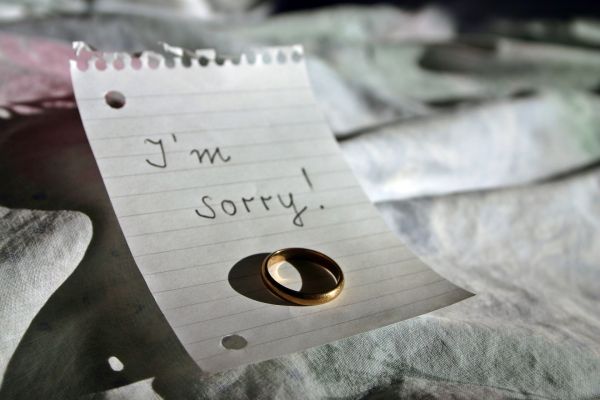Marriage
Is Marriage Worth It for Women?
The benefits go mostly to men.
Posted October 1, 2015 Reviewed by Devon Frye
Key points
- Research shows the increases in health, wealth, and happiness often associated with marriage are disproportionately experienced by men.
- Roughly two-thirds of divorces are initiated by women.
- A study found that the tendency for women to initiate breakups is inherent specifically to marriages, not all male-female relationships.

A casual look at how marriage is represented in popular culture may lead one to conclude that ending up at the altar is the ultimate female desire. Wedding magazines are aimed almost exclusively at brides, not grooms. Reality TV shows highlight Bridezillas, not Groomzillas, and The Bachelor, in which multiple women vie for a ring, is a ratings juggernaut. The central attraction in the pageant of the average wedding is reserved for the bride’s dress, while the groom’s attire receives little billing. Pop culture queen Beyoncé herself has famously admonished men that if they like it, then they should put a ring on it.
Men, on the other hand, are often depicted as commitment phobic, having to be conned or whipped into marriage, or dragged to the altar against their deeply promiscuous nature, which abhors long-term monogamy. The notion of a "midlife crisis," during which men are bound to jettison their old wives for a new, younger trophy model is also a familiar cultural trope.
Marriage, we have been led to believe, is a natural habitat for women, but a stifling cage for men. Thus goes the popular fantasy. However, in the real world of data, things shake out quite a bit differently.
First, confounding the view of marriage as the female heaven and haven is the fact that marriage actually appears to benefit men more than it does women. Research has shown that the "marriage benefits"—the increases in health, wealth, and happiness that are often associated with the status—go disproportionately to men. Married men are better off than single men. Married women, on the other hand, are not better off than unmarried women.
Second, in contrast to the myth that marriage is a woman’s ultimate and sacred fulfillment is the reality that roughly two-thirds of divorces are initiated by women. This is true not only for the young and hip: A recent AARP survey of 1147 men and women ages 40-79 who experienced a divorce in their 40s, 50s, or 60s, found that 66 percent of women said they initiated the split.
New research suggests that there is something unique to marriage—other than the trials of getting along day-to-day with another person—that may make it less than hospitable to women.
A recent paper by Stanford sociologist Michael J. Rosenfeld analyzed longitudinal data from the How Couples Meet and Stay Together survey—a survey of a nationally representative sample of 2,262 adults in heterosexual relations followed from 2009 to early 2015.
The results revealed an intriguing pattern: As expected, women initiated roughly two-thirds (69 percent) of the breakups in heterosexual marriages. However, the gendered trend in relationship breakups held only for marriages and not for other non-marital unions. Moreover, women in marriages, but not in other relationships, reported lower levels of satisfaction.
According to Rosenfeld, these data suggest that the tendency for women to initiate breakups is not an inherent feature of male-female relationships. Rather, it is a feature of male-female marriage. This finding appears to provide support for the notion that women experience the institution of marriage as oppressive, in large part because it emerged from and still carries the imprint of a system of female subjugation.
Rosenfeld notes that marriage law was originally based on the common law assumption that the wife was the husband’s property. The last vestiges of this common law tradition legally subordinating wives to their husbands, such as allowing spousal rape, were eliminated in the United States only in the late 1970s. Most women in the U.S. still take the surnames of their husbands when they marry, a practice required by law in many states until the 1970s.
Just as we cannot maintain grand ancient structures without contending with the limitations of ancient building materials, so it is difficult to sustain old traditions without keeping the old worldviews and habits from which they had emerged. The ghosts of female subjugation haunt the halls of contemporary marriage, to the detriment of married women.
This is an intriguing idea, but doubts remain.
First, causality is difficult to establish in the absence of true controlled experimentation. In other words, since we cannot assign people randomly to married and unmarried groups at the outset, any difference between the groups in outcome may be the result of selection, rather than treatment, effects. For example: If married women are more likely to be dissatisfied, it may be because the marriage made them so (treatment effect) or because dissatisfaction-prone women are more likely to choose marriage (selection effect).
People’s expectations—a variable not measured in Rosenfeld’s data—may also play a role in relationship satisfaction. If the culture sets women’s expectations for marriage high and men’s low, then the reality of marriage, in which men benefit more, may elicit increased satisfaction in men—“This is much better than I expected"—and decreased satisfaction in women.
Moreover, while Rosenfeld’s work may shed light on the "push" side of the decision to leave, the equation he outlines is probably incomplete as it neglects the "pull" side. In general, life decisions are multiply determined. Internal states such as marital satisfaction are likely to be weighed in the decision-making process against external variables such as societal attitudes about divorce, or the ability to maintain contact with children and financial security after divorce. Indeed, existing data attests to the importance of such external pull factors in shaping decisions of both men and women.
For example, the AARP survey pointed to the fact that men more often decided to stay in a bad marriage out of fear of losing touch with their children. These are not unjustified fears, as fathers often experience decreased levels of contact with their children post-divorce.

Conversely, an unsatisfied woman’s decision to leave may depend in part on her employment status. For example, Ohio State University's Liana C. Sayer and her colleagues have provided evidence to suggest that unsatisfied women are much more likely to leave if they are employed.
At the end of the day, the accumulating data paint a picture of marriage as complex commerce in which women may often play a paradoxical role: They work harder for a smaller share of the benefits—which may explain why, while they may often be more eager to get into a marriage, they are often also more eager to get out.




















